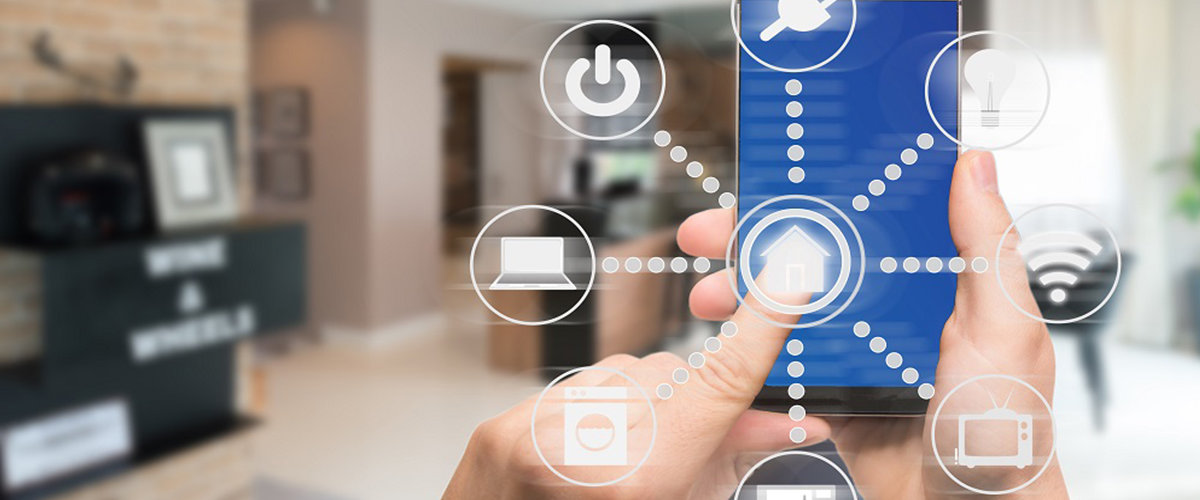
The multifamily housing market is undergoing a transformation with the rise of smart home and smart building technology. Now more than ever, properties are adopting these features and upgrading their offerings to meet a few simple objectives:
- Attract and retain more residents
- Provide high-level living experience for which residents are willing to pay a premium
- Reduce operational costs that chew into margins
Taken together, these roll up into the ultimate goal for property owners and operators—increasing net operating income (NOI).
Generating net operating income
The key benefit of smart technology in the NOI equation is that it can positively affect both inputs: revenue coming in and expenses going out.
When it comes to smart technology, the latter is clear: these new tools are capable of helping organizations reduce operational expenses with next-generation cost-saving initiatives. Curbing energy consumption as a cost cutting measure has existed for years through energy-efficient light bulbs or automatic timers for lights, for example. Now, though, smart tech provides new and better ways for buildings to improve their energy efficiencies and lighten the workload of property managers—and, as opposed to timers and high efficiency bulbs, these methods also materially improve the lives of residents. That’s where the opportunity to increase revenue comes in.
Enter smart technology
Today, multifamily renters are increasingly expecting smart features as a standard amenity. For some residents, technology can even be the deciding factor on whether to move into a new apartment, so it has become more important for properties to start implementing these features.
This popularity of smart technology among residents is simple: it provides a connected living experience that can be controlled through the one device we also rely on in every other aspect of our days—our smartphones. Naturally, people want that experience extend to the home, as well.
According to a recent Xfinity Communities survey of multifamily owners, developers and managers, this is exactly what those on the front-lines are seeing: approximately four-in-five respondents said that adopting smart technology is important for keeping current residents happy and attracting new residents.
Meanwhile, the massive 2020 NMHC/Kingsley Apartment Residents Preferences Report, which surveyed 373,000 renters, found much of the same as 77 percent and 72 percent of residents cited interest in smart thermostats and smart lighting, respectively.
Coming from both multifamily operators and residents themselves, it’s clear the demand for smart technology is there. Crucially, however, because smart technology improves the resident experience, this demand not only drives increased revenue via a higher occupancy rate, but the premium experience means a willingness to pay more on a monthly basis.
Research and real-world implementations have consistently borne this out since the popularization of smart home and apartment technology began roughly five years ago:
- 86 percent of millennial renters and 65 percent of baby boomer renters were willing to pay more for a unit with automated or remote-controlled devices according to a 2016 study by Wakefield Research and Schlage
- In 2018, an Entrata survey found that 57 percent of residents would green light a rent increase of at least $20 per month in return for smart amenities
- According to a 2019 case study from resident engagement platform Zego, 82 percent of residents of S2 Capital, an integrated multifamily company, opted into a smart technology package at an additional cost of $25 per month
We’re now past the theoretical. Residents see the value of smart technology in real time and they’ve repeatedly shown that they’re willing to pay more for it.
Where value is found
Smart tech isn’t just valuable to residents. More than 70 percent of property owners, managers and developers in the aforementioned Xfinity Communities survey said that smart technology is good for their bottom line.
Indeed, property managers benefit from the convenience of app-based control of vacant units, improved energy efficiencies and increased unit value. By having smart devices, including thermostats and lighting, managed via a centralized app, there is more control over their utility usage, which can translate to lower costs and a higher NOI.
Additionally, it simplifies overall management and improves operational efficiency by remotely monitoring specific building infrastructure systems, such as plumbing and electric. As a result, managers spend more time on value-add activities and focus their attention on high-priority tasks.
The simple but key consideration here: these innovations require a strong network to operate without disruptions and to handle multiple devices simultaneously.
Internet bandwidth, reliability and speed are critical to hosting a growing number of smart devices—typically several per unit multiplied across the dozens, or even hundreds, of units throughout the property.
Any value gained from implementing smart devices could be cancelled out by having a network that cannot handle the traffic. Selecting the right technology partner to support a smart community strategy is as important as purchasing the smart devices themselves.
Is it worth it?
While there may be some initial implementation challenges and costs, they can be easily mitigated with the right management mindset. The upfront capital and time investment to purchase, install and learn the new systems can seem daunting, but it doesn’t have to be done all at once or solely by the property operator.
Over time, owners and operators can expand their smart apartment deployment with additional smart features, such as security cameras, smart locks and more— depending on their residents’ needs. More importantly, an implementation partner should have the expertise and service capabilities to guide operators through every step of the journey.
Ultimately, the time and resources put into the planning and implementation phases will determine the value that comes out of the initial investment.
We already know that residents are willing to pay higher rent for homes equipped with smart technology in order to have the day-to-day convenience and the ability to better manage their utility costs via increased control. The question, then, is how much will home automation continue to grow in popularity and how much more efficient could your property be?

